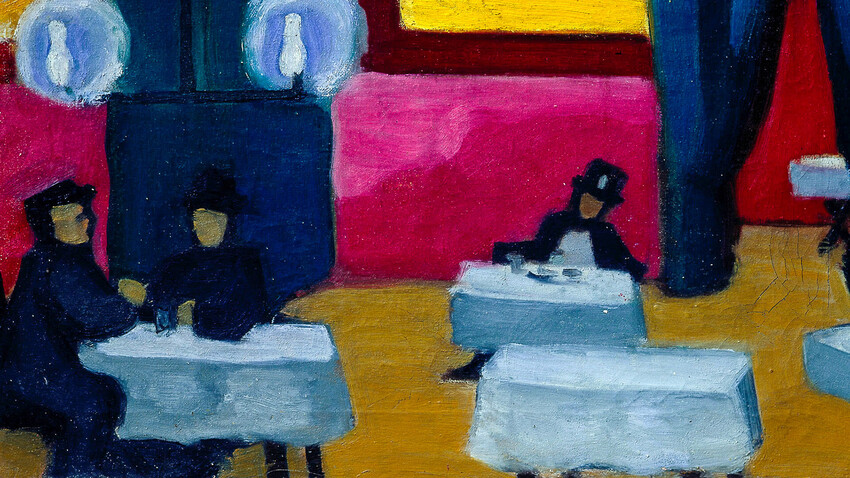
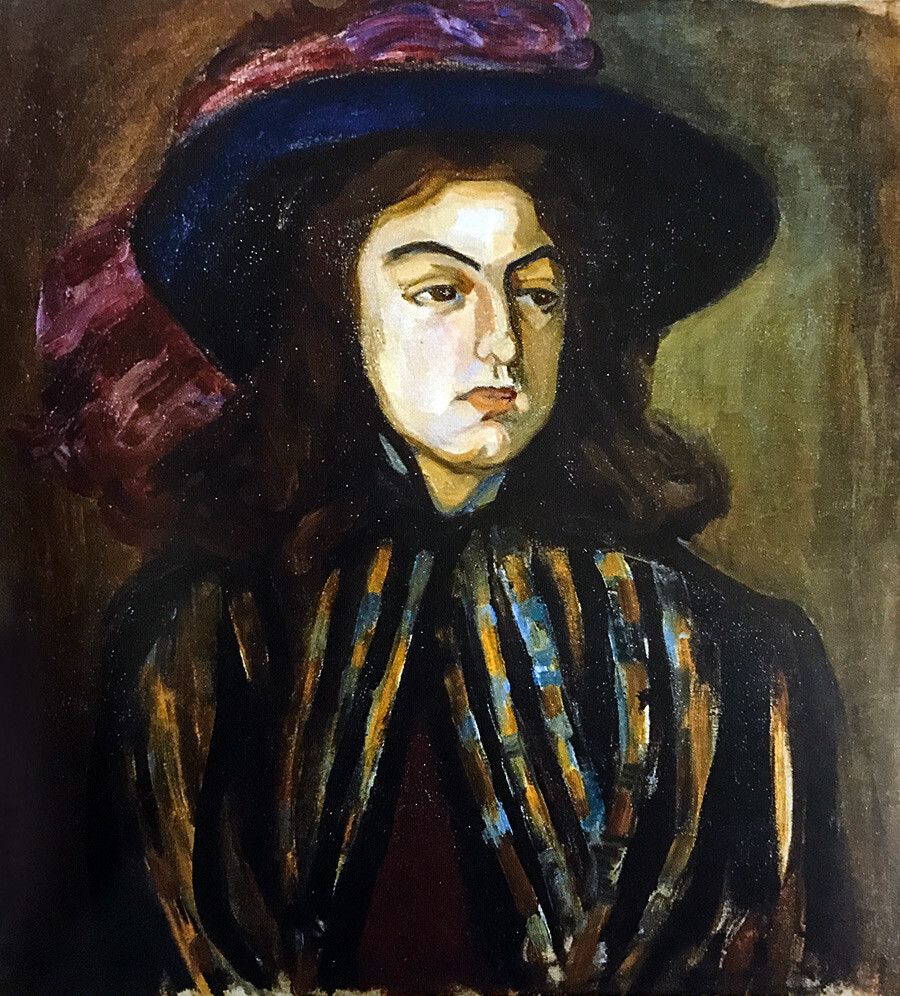
Rozanova was born in the small town of Melenki, spent her childhood in ancient Vladimir and, at the age of 20, went to Moscow to study painting. At the Art School of Konstantin Yuon and Nikolai Ulyanov, she became friends with Lyubov Popova, another future avant-garde painter. This portrait is from her first works during her years of apprenticeship.
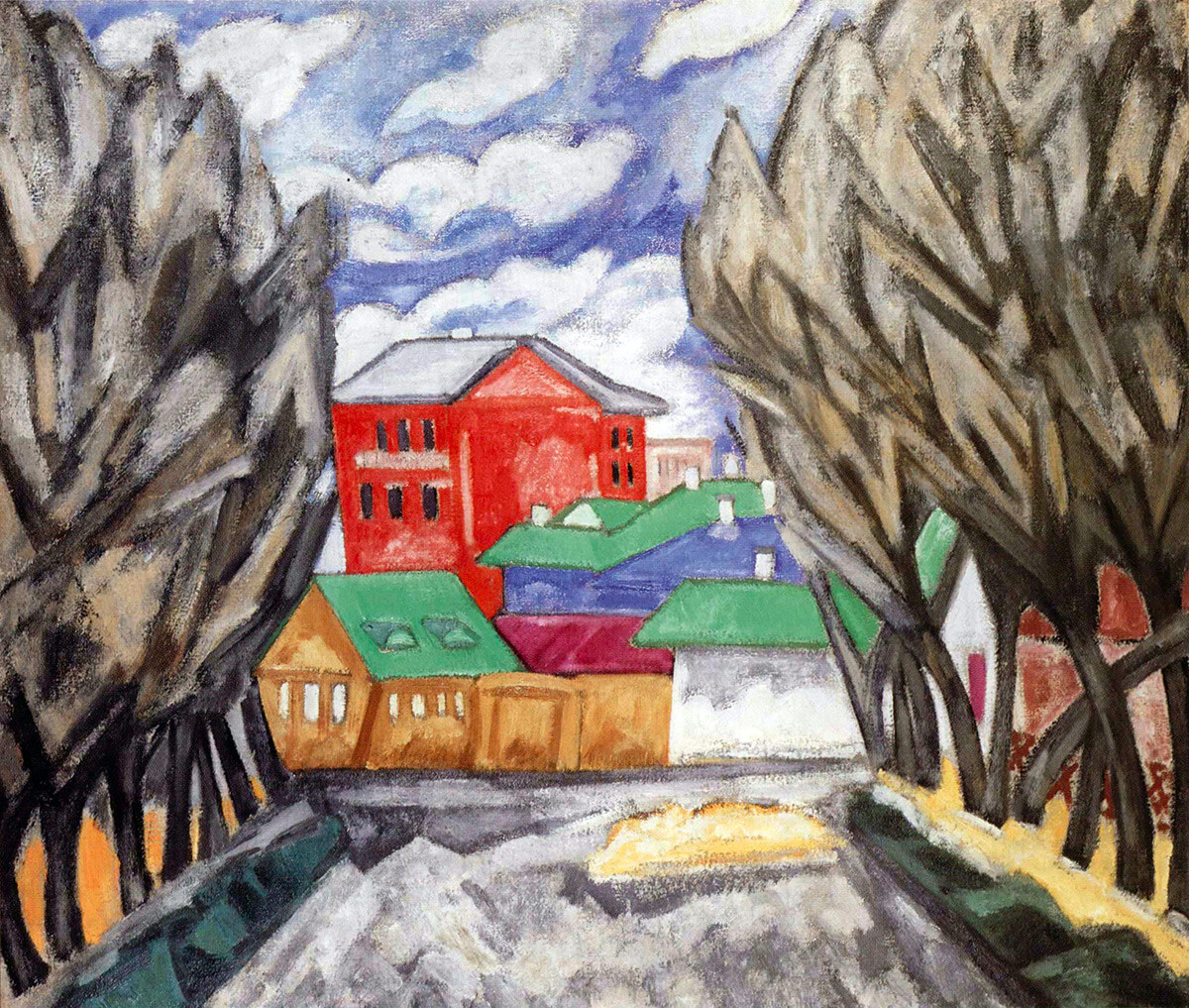
In search of her own style, Rozanova explored new directions for herself - her early landscapes are executed in the style of Fauvism with bright color accents. Blue sky, green and blue roofs of houses, the red facade of the women's gymnasium in Melenki at the end of an alley of monochrome trees - this is how the artist depicted a corner of her hometown.
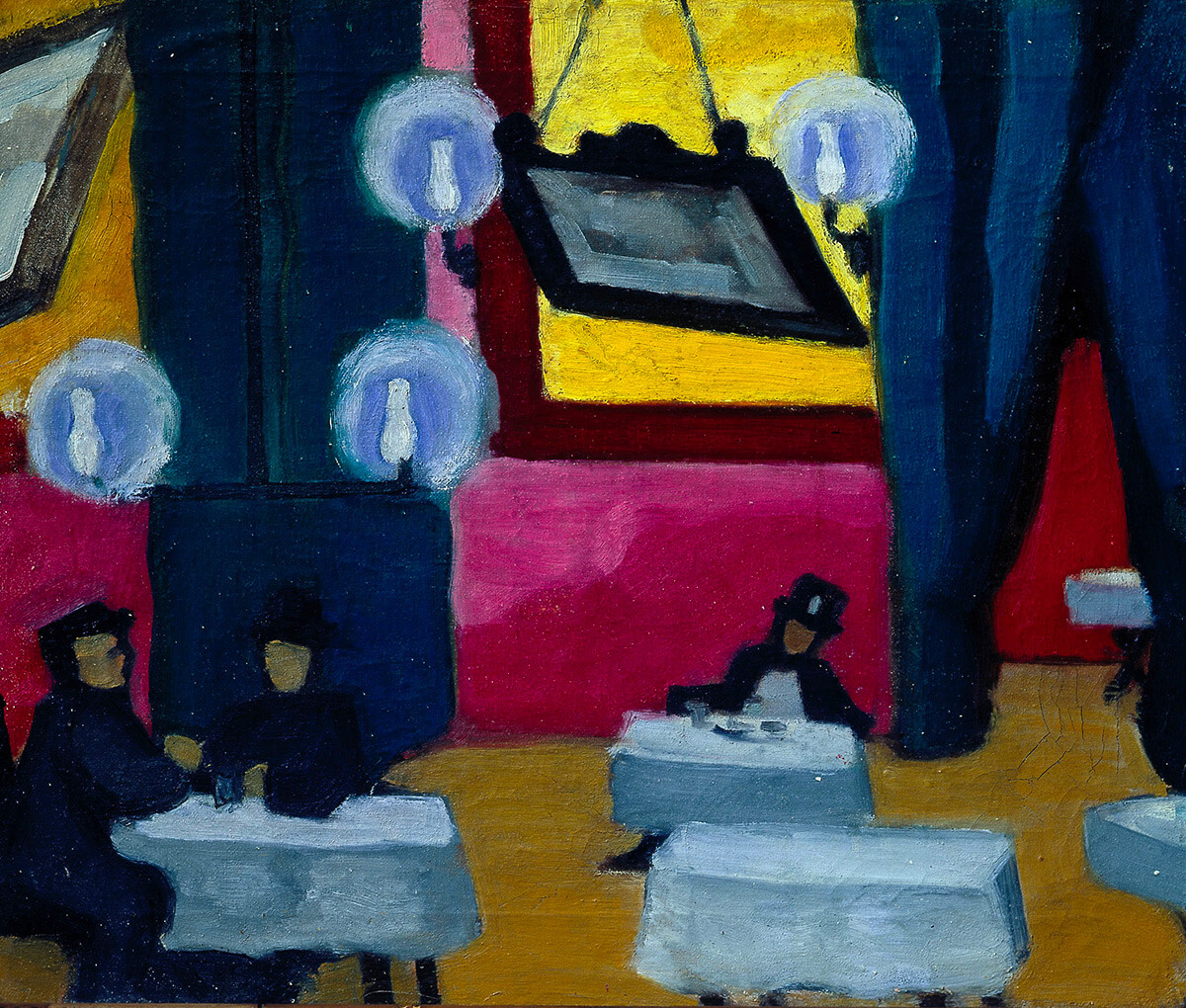
In 1908, an exhibition of Impressionists was held in Moscow, the first large-scale exposition of the movement outside France. More than 250 works by Pissaro, Degas, Cézanne, Toulouse-Lautrec and others. Among them were also paintings by Van Gogh, including ‘Night Café’, which was later bought by philanthropist Ivan Morozov. Impressed by what she saw, Rozanova created ‘Café’, a voluntary or involuntary homage to her new idol - Van Gogh.
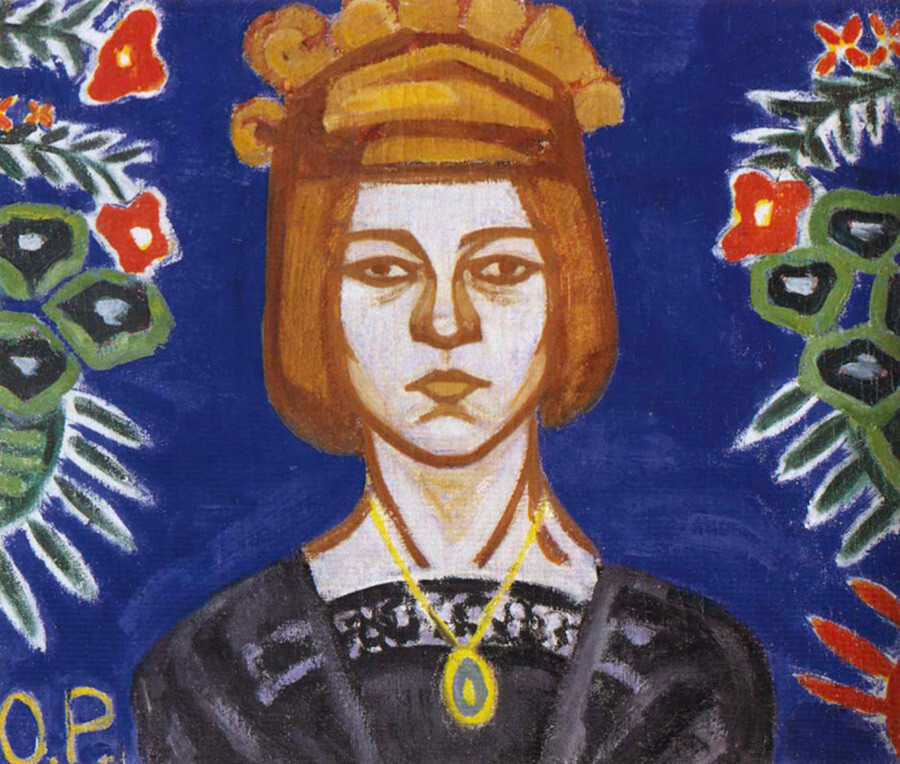
In 1911, she again went to study - at the Zvantseva school in St. Petersburg and became a member of the first major association of avant-garde artists, the ‘Union of Youth’. Collector and patron of art Levky Zheverzheev, who supported the movement, bought her painting ‘Cafe’. At the same time, the artist met Kazimir Malevich and Pavel Filonov, as well as poet and artist Alexei Kruchenykh, with whom she had an affair. He used her ‘Café’ as an illustration in his collection ‘Vozropshche’ (‘Resurrection’) and dedicated it to "the first artist of Petrograd, Olga Rozanova".
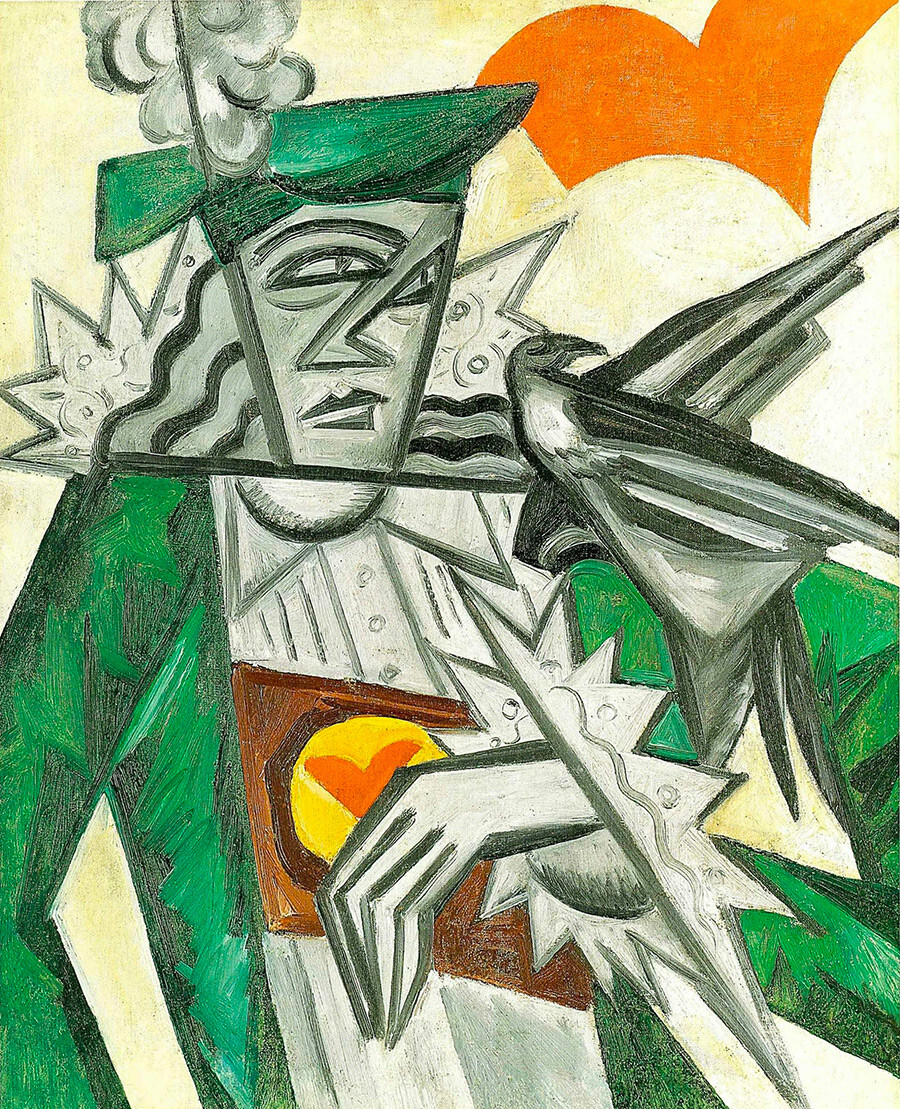
Together with Kruchenykh, Rozanova created 18 books: for the collections, she devised illustrations using the collage technique. For example, linocuts based on works from a pictorial series about playing cards were used in the futuristic ‘Zaumnaya gniga’ (‘Abstract Rot’). It is believed that Rozanova portrayed her avant-garde colleagues: Alexandra Exter as the Queens of Diamonds, Natalia Goncharova as the Queen of Spades and “encrypted” Malevich in the King of Diamonds. Finally, she painted Alexei Kruchenykh as the Jack of Hearts.
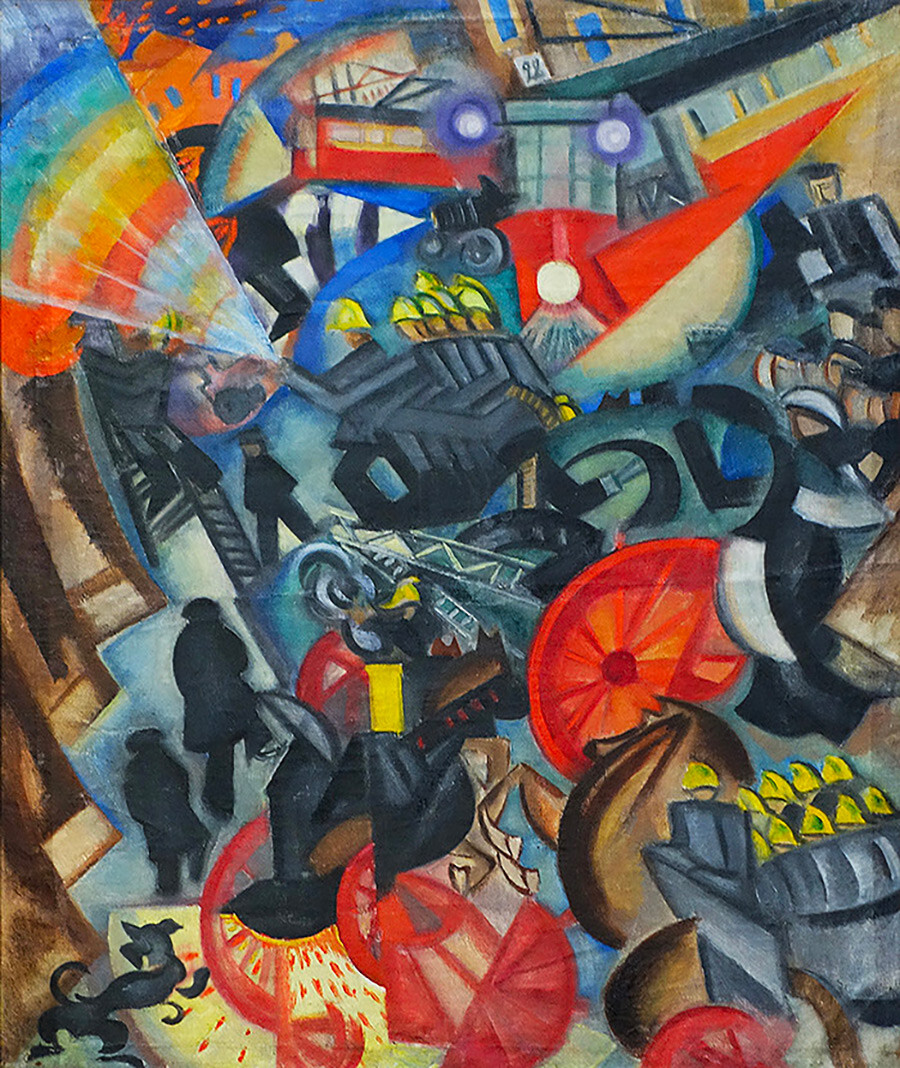
In 1914, the artist went to Rome. At the invitation of the "father" of Futurism Filippo Tomaso Marinetti, she participated in the First International Futurist Exhibition. At this time, she painted ‘Fire in the City’, in which she depicted buildings, bridges and transportation in motion.
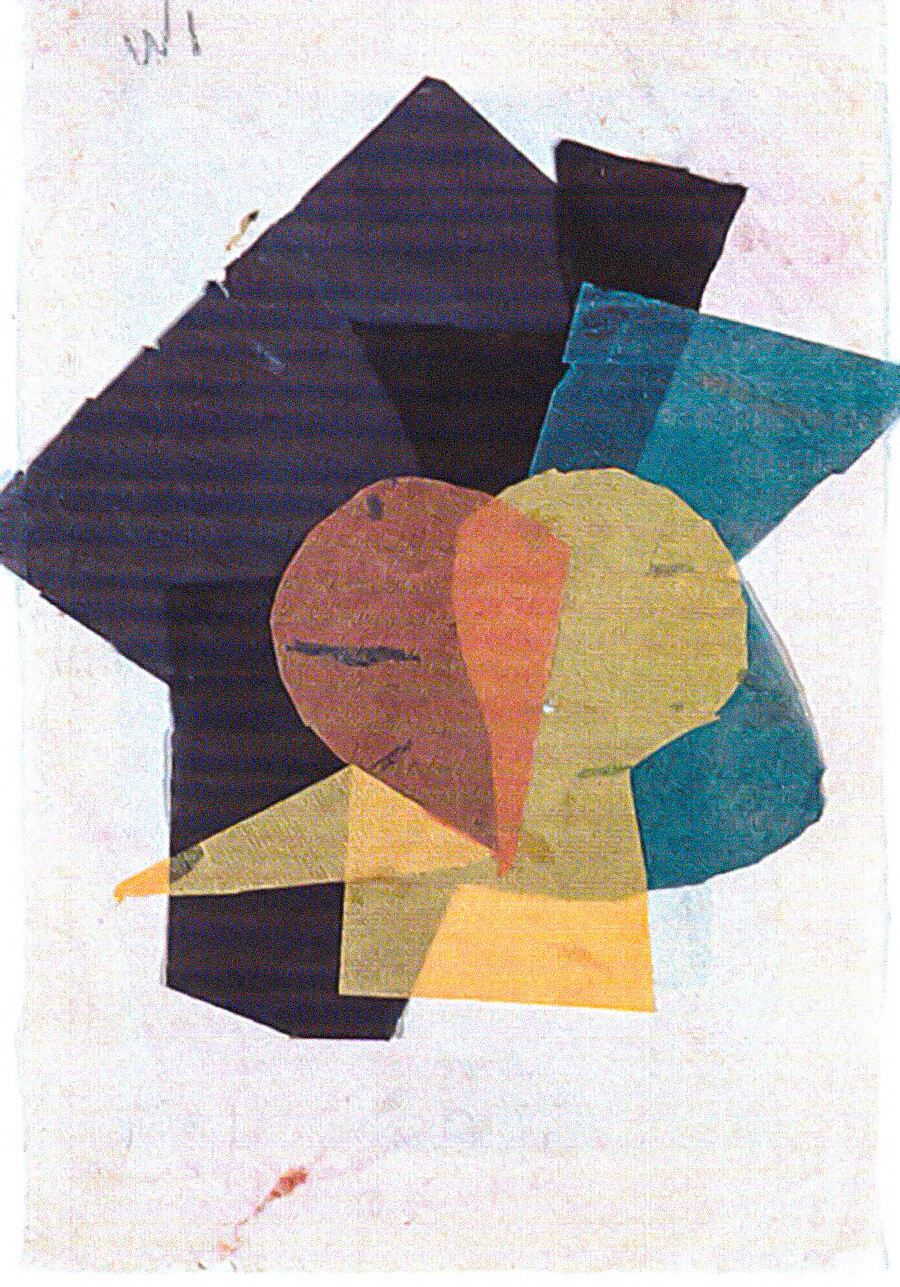
For one of Kruchenykh's books, the artist created a series of collages, so-called abstruse stickers, using a variety of color combinations. The poet was delighted and said that "abstruse language gives a hand to abstruse painting". Perhaps one of the first people to see these works was Malevich, who lived next door to the poet at the time. The artist later believed that Malevich had borrowed the ideas with the "primary elements of the image" for his works from her. "All Suprematism is my stickers: a combination of planes, lines, disks and absolutely no attachment of real objects," she wrote.
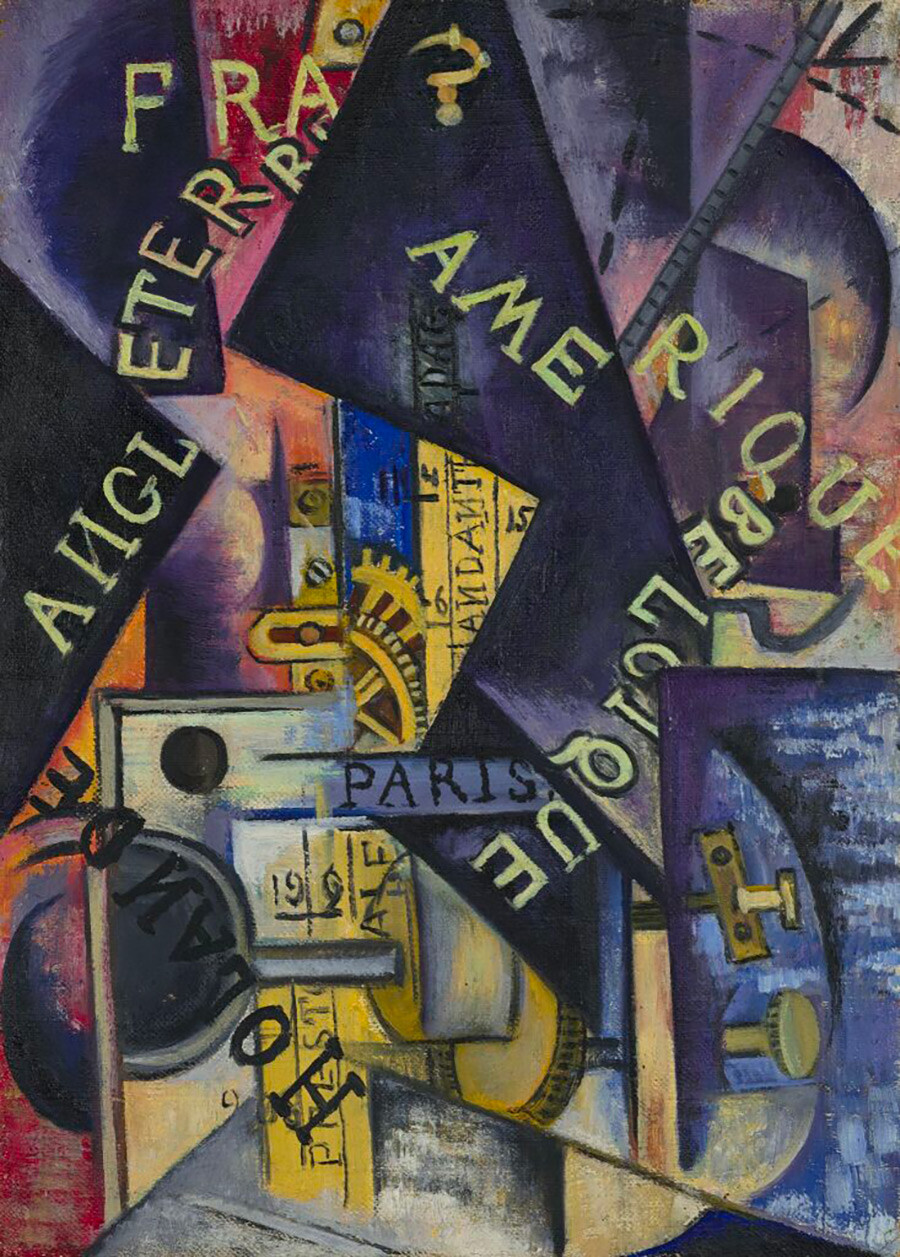
In December 1915, the exhibition ‘The Last Futurist Exhibition of Paintings '0.10'’ - a manifesto of Suprematism - opened in Petrograd. It was then that the public saw Malevich's ‘Black Square’. Olga Rozanova also participated in it with her paintings and assemblages. Combinations of colors and shapes, different textures of objects, inclusions of words - she tried to see and embody even the most ordinary everyday objects on canvas in a new way.
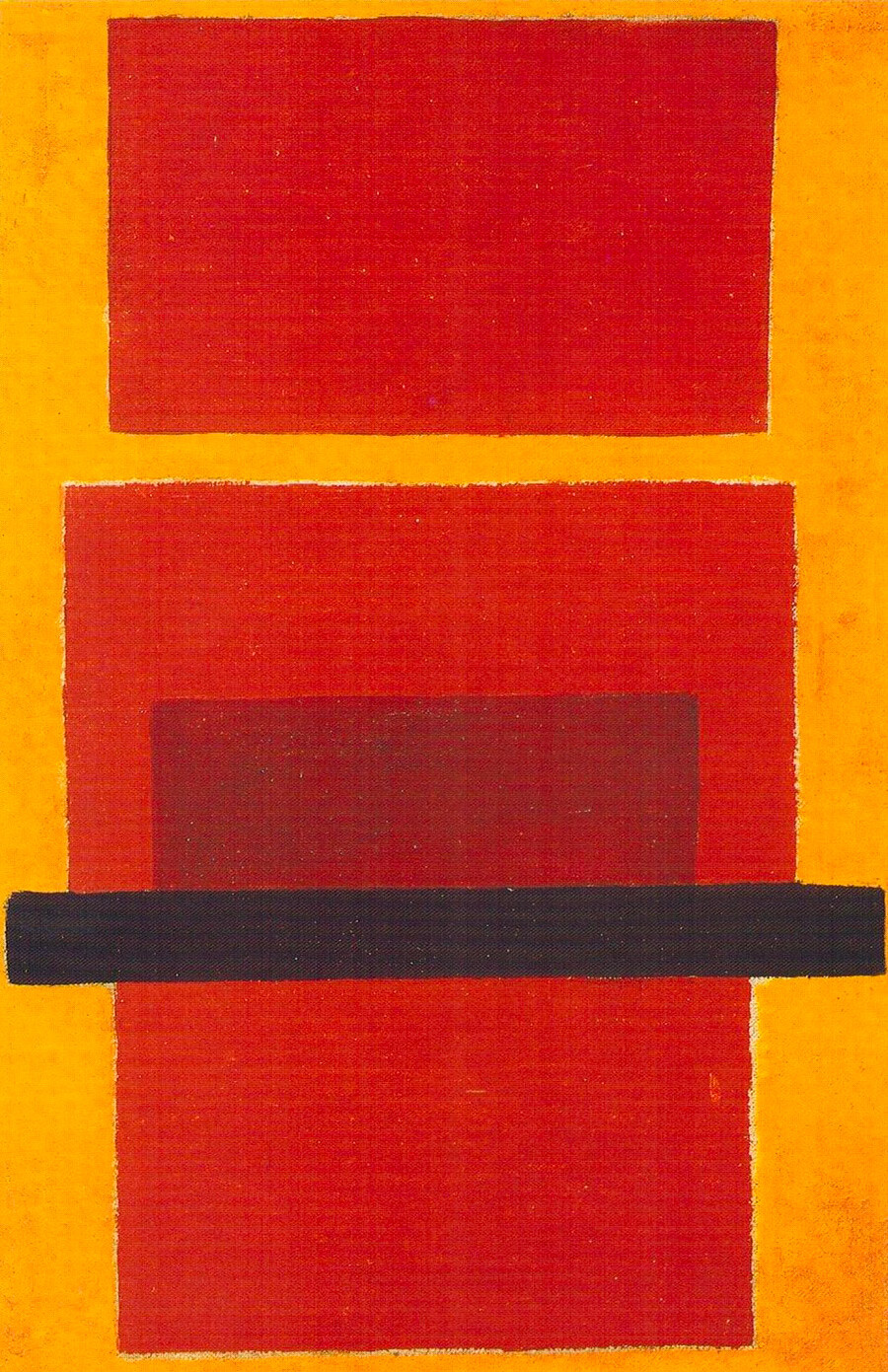
Rozanova tried herself not only in painting, but also in poetry. And she became increasingly interested in color: she created her own direction in art - color painting, in which colorism was given a leading role. She called it "transformed colorism".
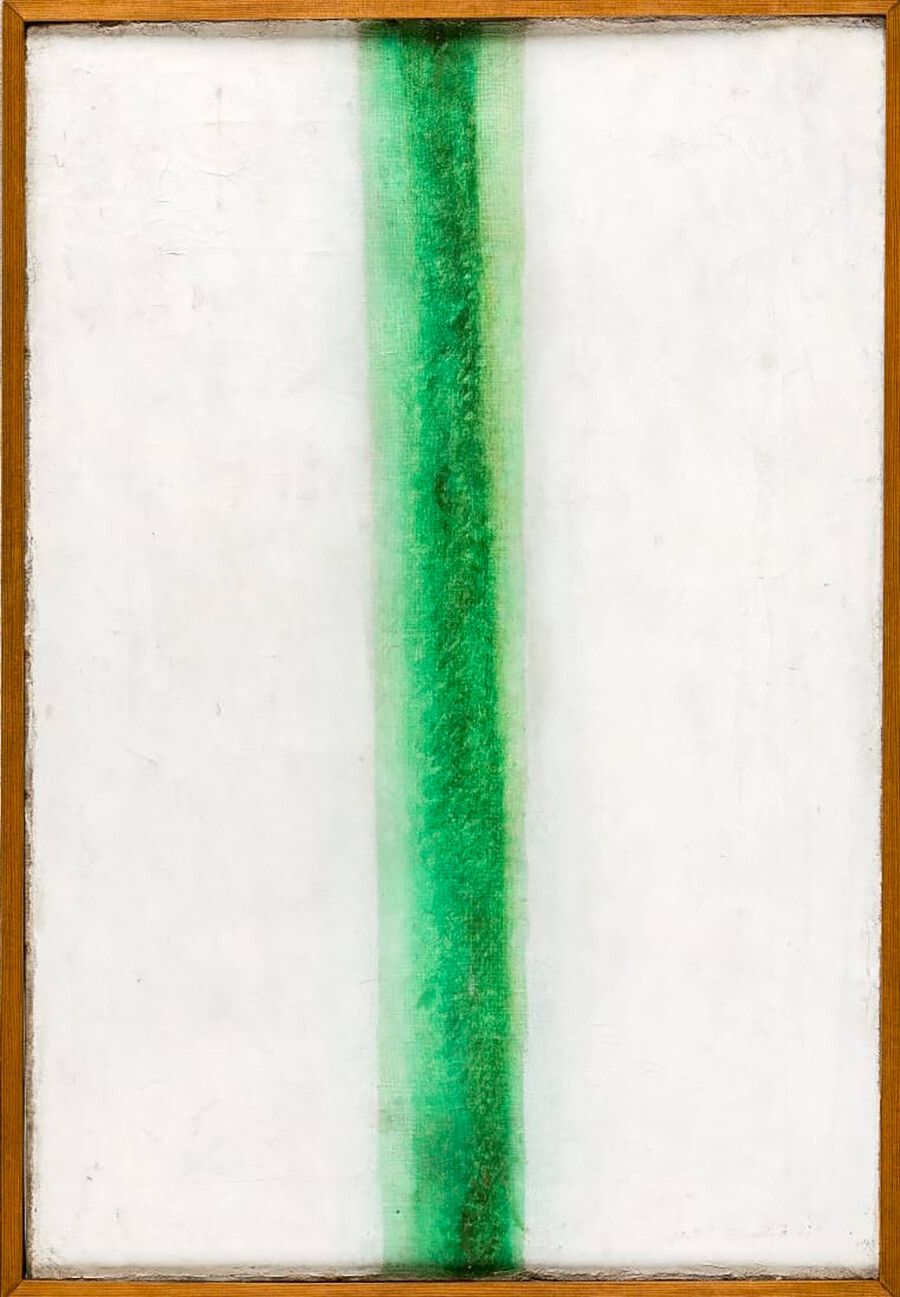
She spent the first year after the revolution in constant work: she embroidered banners for the May Day holiday in Moscow and developed decorations for the celebrations on the occasion of the first anniversary of the October Revolution. At this point, Rozanova created one of her most poignant works - ‘Green Stripe’. It is not by chance that the painting has a second title - ‘Sprayed Light’: a green beam on a white shining background seems to vibrate and lose its contours. And, it seems that only a fragment of the image is within the frame.
In late fall, the artist suddenly fell ill with diphtheria. On November 7, she died in a hospital in Moscow.
Dear readers,
Our website and social media accounts are under threat of being restricted or banned, due to the current circumstances. So, to keep up with our latest content, simply do the following:
If using any of Russia Beyond's content, partly or in full, always provide an active hyperlink to the original material.
Subscribe
to our newsletter!
Get the week's best stories straight to your inbox